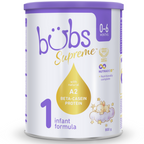How to Burp a Newborn: Top Techniques Every Parent Should Know!
Want to know the secret to a soothed and happy newborn? Tender loving care and a good burping technique. Alright, there might be a bit more to it than that but it’s true that a big old burp can make a world of difference when it comes to your newborn’s comfort and digestion.
After a feed, it’s not unusual for babies to go from blissed-out milk drunk to squirming, screeching and spitting up – especially as you try to lay them safely on their back to sleep. Trapped gas can be a big contributor to this kind of unsettledness, which is where safe and effective newborn burping techniques can help.
Why Is Burping Important for Newborns?
When babies are born, some of their tummy muscles are still underdeveloped, including the ones responsible for expelling trapped gas and air. So, for the first few months of life, newborns require our help to burp to prevent and decrease discomfort after eating. Skipping this step may seem harmless at first, but what happens if you don’t burp a newborn is that any unreleased gas makes its way to the intestines, where it causes tummy pain. Skip burping for a couple of feeds, and the gas builds up more and more. This can lead to prolonged fussiness and colic well after the feed takes place.
Newborn Burping Techniques
Whether you’re a new or experienced parent, it’s handy to have a few different newborn burping techniques up your sleeve. After all, every baby is different and may respond to some and not others. The most common methods include:
Over-the-shoulder
-
Put a cloth over your shoulder
-
Place baby with their chin resting over your shoulder and their tummy against your chest
-
Keep them upright and supported with one hand while gently rubbing their back with the other
-
It’s normal for your baby to spit up some milk during burping – the cloth will (hopefully!) catch it
Sitting on lap (upright)
-
Sit baby upright on your lap
-
Place your hand underneath their chin, supporting their head and neck as you lean them slightly forward
-
Use your free hand to gently rub their back – there is no need to pat or use force when burping a newborn
Lying across lap or forearm
-
Place your baby belly-down on your lap or forearm with their head facing sideways, supported by your knee or arm
-
Rub your baby’s back gently with your other hand
-
Avoid this position if your baby is prone to spitting up
Best Newborn Burping Positions
Finding the best newborn burping positions for you and your baby will take some trial and error. Each of them work differently and have different benefits.
Over-the-shoulder position
-
A natural, comfortable and secure position for new parents
-
Keeps baby upright, which can be helpful for reflux babies
-
Uses gravity to help release trapped air
Sitting on lap (upright) position
-
An easy position to transition to after feeding
-
Good for babies who have strong head control
-
A stable position for effective burping and gas release
Lying across lap or forearm position
-
Applies gentle pressure to the tummy to encourage gas release
-
Works well for sleepy or relaxed babies
-
Good for babies who enjoy tummy time
How Long Should I Burp My Newborn?
Some babies are quick to burp after a feed, while others may take some time – they’re all different! General advice is to keep your baby upright for 10-15 minutes after feeding to help prevent milk from coming back up. Of course, newborn spit-up is normal and may still happen regardless. If your baby is prone to spitting up, you may find extending this time helpful. A clear burping noise, a relaxed body and reduced fussiness and discomfort as you lay them down are all signs your baby has been sufficiently burped.
How to Burp a Newborn That Won't Burp
Sometimes, no matter how hard you try or what newborn burping technique you use, no burp comes – newborns can be a little stubborn like that! If your baby doesn’t burp easily, try switching up your techniques. The same thing might not work every time and sometimes a little extra movement (from switching positions) can help release the gas. Be patient, give it a few minutes to work and if it doesn’t, move to the next. Some other gentle techniques to try include bicycle legs (for gas relief) or burping halfway through a feed instead of waiting until the end. A newborn that won’t burp doesn’t necessarily mean something is wrong, but if you’re concerned about your baby, seek advice from a medical professional.
Why Does My Newborn Get the Hiccups After Burping?
Ah, the dreaded hiccups. Just as you’ve finished a successful feed and burp, here they come to ruin it! Although they might be bothering you, baby hiccups are normal and unlikely to be causing your baby any pain or discomfort. Hiccups commonly occur after feeding and are caused by diaphragm spasms. Burping and sitting your baby upright after feeding can be of help – but most babies will stop hiccuping after a few minutes without any special care or treatment. If your baby’s hiccups don’t settle after 5-10 minutes, or you’re worried their hiccups are affecting their sleep or comfort, seek support from a medical professional.
Conclusion
Whether you’re breastfeeding or bottle-feeding, burping plays an important role in every newborn’s feeding routine. Using newborn burping techniques to release any gas or air swallowed will help to relieve pressure on their tiny tummies and keep them comfortable. Now that you know the best newborn burping positions to try, put them into practice and remember to be patient – for a lot of babies, burping takes time. However, if you’re concerned about your baby, listen to your instincts and seek professional medical advice. You know your baby best!


